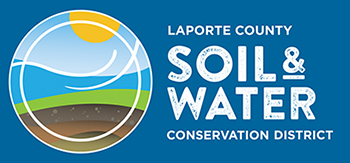Construction Site Run-off Control
To maintain and improve water quality, it is essential to control run-off from construction sites. This run-off, which contains soil disturbed during the construction process, can contribute large amounts of sediment to our water ways. Sediment in lakes, rivers, streams and wetlands can impact aquatic life, impede recreational uses, reduce property values and diminish the storage capacity which increases flooding. Sediment is the number one pollutant-by volume-in our waterways. Preventing these problems is more affordable than correcting them after they have occurred.
Best Management Practices on Construction Sites
Just because a BMP is installed, doesn’t mean that it is working properly. Each BMP has to be installed properly and regularly maintained to function as it is intended. See a “bad” and “good” representation of common construction Best Management Practices below. Please contact our office for questions or assistance with your BMP’s.
Click here to see photos of Construction Best Management Practices.
About Rule 5 and Rule 13:
Indiana’s State law regulating construction run-off is known as Rule 5. Municipalities and Counties with urbanized areas are required by a related rule-Rule 13-to put practices into place that will reduce the volume and pollutant load of storm water.
In order to comply with the requirements of Rule 5, a Stormwater Pollution Prevention Plan (SWPPP) must be completed and filed before beginning a construction project.
Local Requirements: Click here to download templates and forms required for local storm water ordinance.
Indiana Storm Water Quality Manual: The Indiana Storm Water Quality Manual provides guidelines and specific storm water quality measures for controlling soil erosion; controlling and treating the nonpoint source pollution associated with sediment-laden runoff; and the management and treatment of pollutants associated with post-construction land uses. Adhering to these guidelines and properly applying appropriate storm water quality measures will help minimize the adverse impacts that land disturbance, construction activity, and development can have on soil and water resources, and ultimately, the cost of those impacts to society as a whole. In addition to a variety of storm water quality measures, the manual also discusses the philosophy and planning procedures critical to developing an effective storm water pollution prevention plan.
You can also find a webcast entitled “Construction SWPPP’s from A to Z, Everything You Wanted to Know and More!” at this link:
EPA Construction SWPPP Webcast
Concrete Washout
Sediment isn’t the only pollutant that runs off from construction sites! Concrete is another potential contaminant to our water supply. Click here to watch a video produced by Indiana Ready-mix concrete and other partners. It will help you learn how to properly handle your concrete washout.
Self-Inspection
Rule 5 requires that every project have a self-inspection weekly and after every half-inch rain event. This ensures that all BMP’s are installed and maintained properly. Our MS4 Coordinator has developed the following form to assist you with the self-inspection process:
Rule 5 Self-Inspection Form–This form is required to be completed weekly and after every half inch rain event!
If you have any questions or need technical assistance with the self-inspection process, please contact MS4 Coordinator Rick Brown at 219-326-6808, ext. 2114.
Control of Run-off Post Construction:
Controlling run-off from the site after construction is complete is just as important as planning for run-off control during the construction process. Once the project is complete, there will be new impervious surface present-from roads, rooftops and parking lots- that did not exist before. An impervious surface prevents storm water from infiltrating into the ground. It also allows storm water to flow quickly off of the surface and into our water ways, taking associated pollutants along with it. Constructing increased impervious surface area increases stormwater volume and pollution.
Many studies have shown that planning and designing for post-construction run-off is the most cost-effective way to deal with storm water and its associated pollutants. There are many innovative and practical ways of keeping storm water on site. This will protect water quality, slow the flow of storm water and reduce costs in the long-term.
The EPA has a menu of Best Management Practices that will help you select methods to control your stormwater run-off once construction has been completed. You can find that here:
The EPA also provides a fact-sheet on Post Construction Storm Water Management. Find it here:
